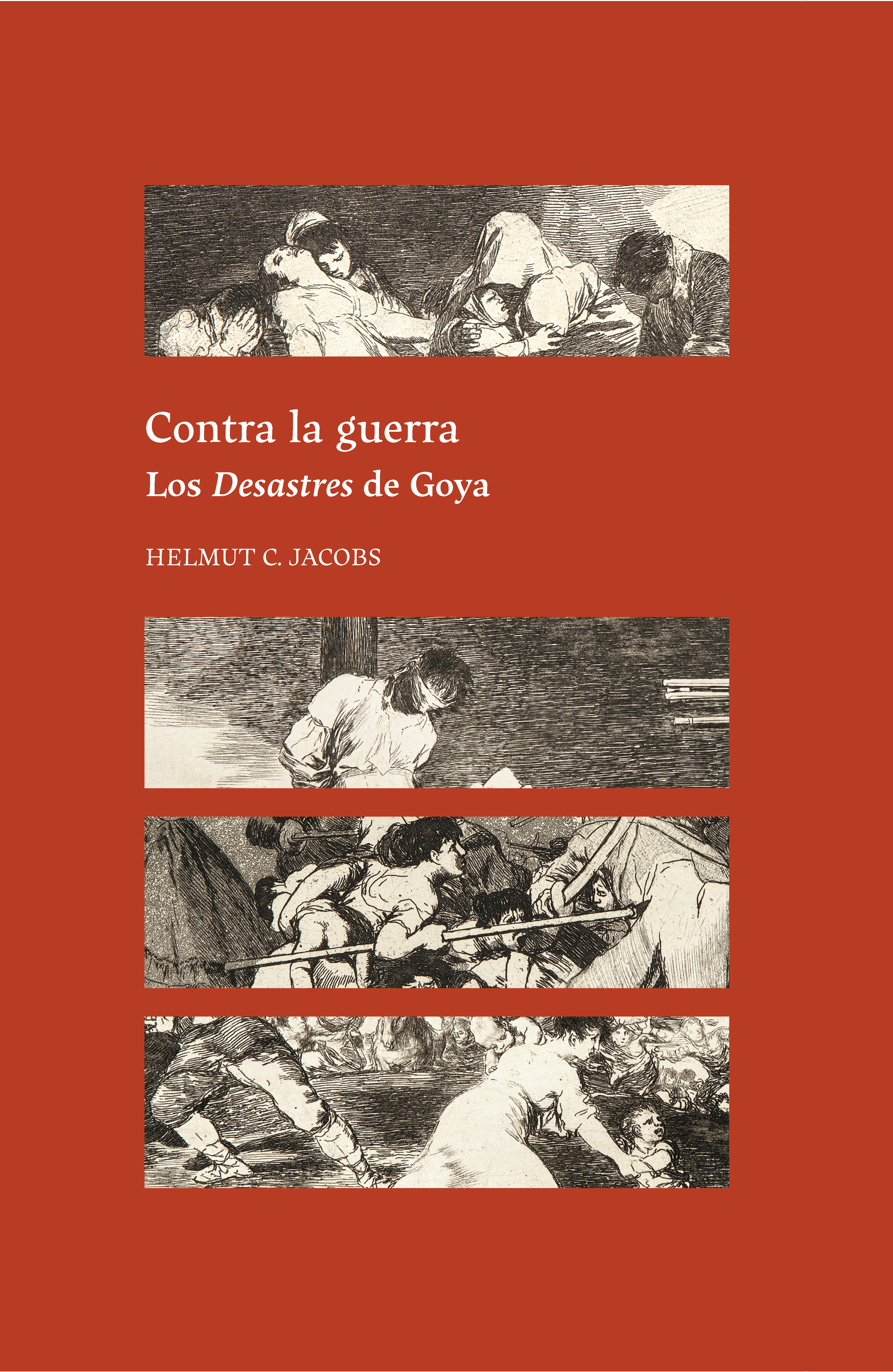Author
Helmut C. Jacobs
Characteristics
368 pages; 181 colour illustrations; hardcover; 17.5 × 27 cm
Publication
Spanish; trans. by V. Maza; originally published by Königshausen & Neumann, Würzburg, 2023; with the help of the Ministry of Culture and the collaboration of the Instituto Ceán Bermúdez; 2025
ISBN
978-84-18760-54-9
Price
€43,27
Buy on our site and save 5% until January 5 (Coupon code: NAVIDAD 2025)
In 1810, during the Peninsular War (1808–14), Francisco de Goya began working on the 82 prints that make up the Disasters of War, in which he artistically portrayed the experience of the drama of war and brutally captured the grim reality of its impact on people’s lives. Drawing on books of emblems and literary sources, he sublimated and abstracted specific aspects and events of war, including torture, devastation, hunger and the horror of sexual violence as a weapon, which he was the first to depict, even though there was no social debate on its use as a means or consequence of armed conflict in his period. Despite not being published until 1863, 35 years after the painter’s death, the series is among Goya’s best-known works, and its influence on many later artists is undeniable.
Indeed, the book begins with an introduction to the Disasters and an analysis of the prints as a paradigm of the representation of extreme violence. It also addresses the Peninsular War as a historical backdrop, Goya’s personal experiences in the conflict and his political stance, which, although initially firmly opposed to the French invasion, shifted towards neutrality and pacifism as his work progressed. Furthermore, the influence of the political satire of Giambattista Casti’s The Talking Animals on the Emphatic Caprichos that bring the series to a close makes it possible to understand the political relevance of the prints by setting them in the context of the fierce debate between monarchists and liberals in Spain. This is followed by an edition of the Disasters with critical annotations that describe, analyse and contextualise the prints and their captions in detail in the light of literary works, letters, memoirs of witnesses of different nationalities and texts published in the Spanish press of the time.
Helmut C. Jacobs, who holds a PhD in Philology and is a professor of Literature in Romance Languages at the University of Duisburg-Essen, focuses his research on the connections between image and text – or between music and text – in eighteenth-century and Enlightenment literature, as well as on the work of Goya and his international reception. He is the author of Belleza y buen gusto. La teoría de las artes en la literatura española del siglo XVIII (2001), El «Capricho 43» de Goya en el arte visual, la literatura y la música (2011) and Goya en la poesía published in German (2015) and Spanish (2016), and was responsible for Los comentarios manuscritos sobre los «Caprichos» de Goya. Edición, traducción e interpretación (2019–20) and Los «Caprichos» de Goya en grabados coloreados del siglo XIX. Edición, análisis e interpretación (2023).
“El autor pone el foco de su atención en la historia cultural y, sobre todo, en las fuentes textuales. Esto es esencial para comprender el arte de Goya. Pero también sus descripciones pictóricas son extremadamente precisas y, a menudo, van más allá de lo que puede verse en las ilustraciones que las acompañan”, Michael Scholz-Hänsel, Estudios Culturales Hispánicos
“Diese zu betrachten erfordert starke Nerven, werden wir doch zwangsweise Bildzeugen der schlimmsten Untaten […]. Helmut C. Jacobs ist nicht genug dafür zu danken, dass er sie uns in ihrer ganzen historischen und künstlerischen Komplexität zugänglich gemacht hat”, Stefanie Leibetseder, literaturkritike.de

